A million. A billion. I don’t know, why would it even occur to anyone to ask this question? I know Twitter has some odd limitations, but the like is the most basic form of engagement out there. To limit it would be to limit the most common social interaction on the social media site, and there’s no way Twitter is going to do that. It’s not as if you can spam likes at someone and somehow ruin their day.
I suppose on the aspect of safety there might be some concerns. In order to like a tweet, you have to click the like button or tap it on your phone. That’s a physical interaction with a device. If you click or tap too hard, you could hurt your finger, or break your device. You don’t want to crack your screen or break your mouse, right? That could be dangerous.
There’s also air friction to worry about. If you click too fast, your finger might be moving so fast that the friction of the air causes it to heat up, eventually bursting into flames. You could seriously burn yourself, or set your house on fire, and that wouldn’t be good at all. Of course, in order to do that, you’d have to be moving incredibly fast, and you’d lose your accuracy. I also doubt that your device would be able to register so many clicks so quickly, AND the speed of impact would destroy your devices long before you lit on fire.
If you can accurately click and like one new tweet every second, for 24 hours a day, non-stop, you could theoretically like 86,400 tweets in a day. That assumes that you can like one new tweet every second non-stop, and that you don’t have to wait for Twitter to load new content, and that you don’t come across tweets you’ve already liked. I suppose you would have to go through a new hashtag every hour or so, and you would want to prepare ahead of time.
Now, theoretically, you could like a lot more tweets per day than just that. You could set up an API that loads a tweet embedded in a page, and then upon click loads a new one. Each click would like the tweet and trigger your script to load the next tweet. In order to prevent loading times, you would have to pre-fetch hundreds or thousands of tweets at a time, but with an autoclicker device capable of sending one click event every tenth of a second, you could actually like close to a million tweets in a day.
This also assumes that you have unfettered API access. Twitter’s API has limits that aren’t listed on their normal limitations page. API limitations are on a per-user basis, on a per-application basis, so it goes off your authentication token. It’s also divided into 15-minute increments, so a “per day” limitation is actually a limitation of per quarter hour. I don’t see any limitations on the number of likes you can send, but you do have a limit of a maximum of 180 GET requests every 15 minutes. Now, a GET request is to pull information from Twitter, which would be pulling the tweet you want to like; there’s nothing I can see that limits the number of likes you can send. Using your app you could then pull up a maximum of 17,280 tweets per day to like. That’s a much smaller limit than our theoretical maximum, but it also only covers one application. Since the limits are per application, you could set up several near-identical applications to do this. You’d have to use a script that does location-based clicks alternating through each application no more than 180 times per 15 minutes, which makes it more complicated.
Okay, so all of this is entirely theoretical. There’s no reason to try to like so many tweets at a time, right? Or is there?
Liking Tweets for Fun and Profit
Liking a tweet is a sort of bait, to some people. Normal people use the like simply to indicate that, well, they liked the content. I see an author I like publishing a new book, I like their announcement. I see a video game coming out and like the trailer. I see a funny gif and like the tweet it’s in.
Some business owners attempt to hook people with a like and try to get followers out of it. They pick a hashtag and go through and like all of the tweets they find, within reason. No sense in liking negative tweets or tweets trashing their brand, right? The idea is that the person whose tweet you like goes on to check out your account, decides they like your content, and follows you.
I don’t know about you, but I’ve literally never done this. I’ve never had someone like my tweet and gone on to follow their account because of it. In fact, when people like my tweets, I only see a fraction of the names listed in the notifications, and I don’t go check them out. A few are names I know, a few are names I don’t, and neither are of concern. Getting likes is more of a “oh, neat” reaction than anything else.
Now, I have heard of exactly one time that Twitter has taken action against people for mass likes in an attempt to get followers. Bear with me; this is a somewhat insane example.
A number of years ago, the TV network The WB created and began to air a show called Supernatural. This show, starring Misha Collins and some other people who don’t matter to this story, took off amongst young people. It’s still going, with the 13th season starting at the end of 2017, but that isn’t important either.
What’s important is that Misha Collins became somewhat of an internet icon, and his antics inspired a huge community on Tumblr. One thing he created on a whim was the Greatest International Scavenger Hunt the World Has Ever Seen, or GISHWHES for short. This consisted of a massive list of random images and videos his audience was meant to compose, which he and some other judges would rank and assign points to. The winners won something, I’m not even certain what, and there was donation to charity involved. The whole thing has won a bunch of Guinness world records.
What does this have to do with anything? Well, in 2014, one of the items on the GISHWHES list – number 170, which you can see here (Tumblr slightly NSFW) – is to create an account on a social media site emulating Orlando Jones, the actor, and attempt to gather up 400 followers.
Now, the follow and follow-back methods are heavily frowned upon by Twitter, even back in 2014, so anyone who attempted to mass follow users and get 400 follow-backs was banned very quickly. Others took to leaving likes en masse in order to attract followers in return. Rumor has it that Twitter also banned these users, with some form letter about mass unnatural like behavior, but also probably because of the whole celebrity impersonation thing. My guess is that the likes didn’t actually have anything to do with the bans, it was just an unnatural action that brought the accounts to Twitter’s attention, and they banned them for being spam. I don’t have record of much of any of this, just the word of a friend to go on, so who even knows, really?
How to Actually Use Likes on Twitter
Alright, I’ll be the first to admit that most of the above is, well, more or less nonsense. None of it has any real business applications or is anything more than vague trivia. The fact is, Twitter doesn’t appear to have any stated limitations on the number of likes you can make in a day, week, or year. There’s nothing in the API or the official documentation about it, and I haven’t been able to find mention of restrictions from any reputable blogger.
What I CAN find are some very old mentions of a “favorite limit” from back when likes were called favorites, and when Twitter tried to treat them as something more than the Facebook like. Favorites (now likes) seemed to have a limit of about 1,000 per day. People on sites like BlackHatWorld advocated sticking closer to 500 or so, to avoid coming too close to the limit. More modern discussions of using bots to like tweets mention people doing 300-350 per day, but no one came forth with hitting a limit.
This is from back when favorites had a little more weight than modern likes, when there were accounts like FavStar that would give people in their communities awards based on favorites, and other such interactions. These days, all of that is gone, and likes are just likes. People mostly used them the same way anyways.
In fact, Twitter staff at the time explicitly said they didn’t publish the limit on likes, for… some reason. I don’t know why they would do that except to make a few black hats get caught trying to find the limits.
How should you actually use likes, though? If you’re a legitimate business, or even one stepping into the gray hat techniques, you’ll want to use likes in a way that actually has some form of return on the minimal investment of clicking that little heart button.
- Likes can be used to show approval for certain opinion and perspectives without adding an explicit endorsement to your messaging. For example, you might like a tweet about a local sports team winning or about a political issue’s resolution.
- Likes can be used to acknowledge positive reviews. When a user tweets about your product, specifically about being satisfied with it, you can like their tweet to show that you saw their review and that you appreciate it. You can take this one further and reply to their tweet as well, for better benefits.
- Likes can be used to “bookmark” content you want to look into later. This is typically more for personal use than for business use, but you can like content from influencers to check out later and possibly link to, respond to, or add to your messaging. Of course, it’s generally better to use an app like Buffer or Pocket to do this for you instead, but to each their own.
- Likes can be used to indicate the end of a message chain. Essentially, it’s a form of acknowledgement. If you’re having a multi-reply chain, you can like the last response to indicate that you saw it and that you have nothing more to say. This only works if you don’t like everything anyone says already; they might still expect a response if you do that.
One thing you should not do is use a bot to like every mention of your company. I’m sure you’ve seen stories through the years of companies doing that on Twitter or Facebook, or worse, using automatic “thanks for your feedback” replies. That’s fine for praise and positive reviews, but if someone comments that they think your business sucks and you like the tweet, what does that say? Literally everyone already knows that you’re just automating the process. In fact, this cheapens every like and most replies you leave after the fact, even on other sites; everyone will now assume that you do it automatically and that they aren’t actually getting any attention. It actually has a detrimental effect.
My advice? Use likes sparingly. They should be a valuable little hint of genuine acknowledgement and personality, not something everyone gets just for showing up. If you use them organically you’ll never come close to a limit, and if you’re coming close to a limit you’re botting and don’t care about real audience building anyways.
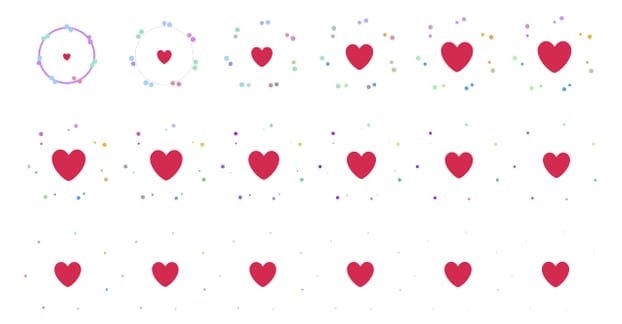
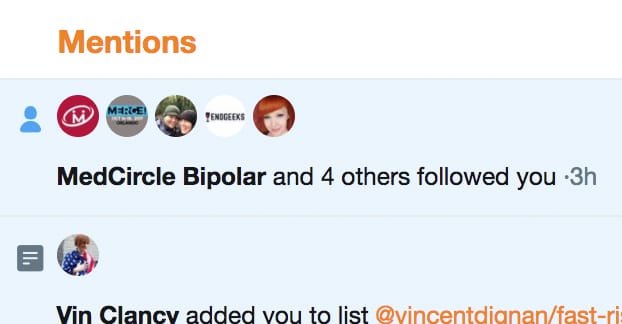
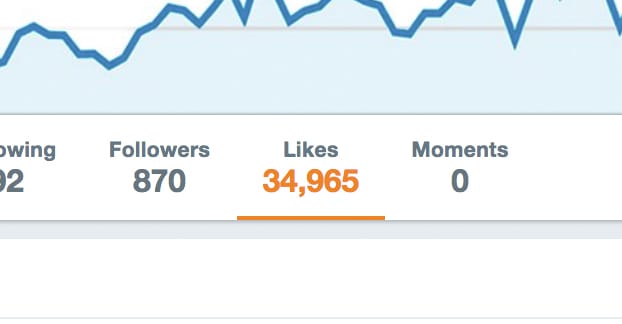
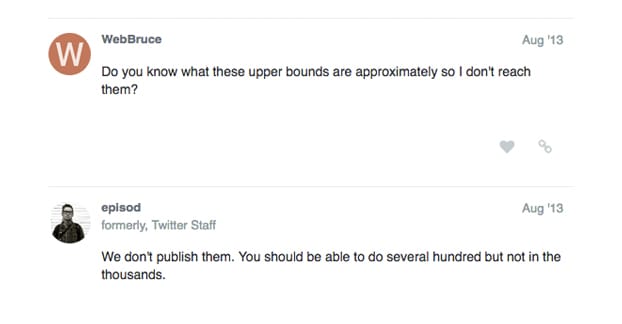



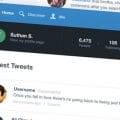
Wow! Thank you. So basically 100 likes per hour, 1000 likes per day?
Yes, exactly. At the time of writing, if you stay under 1,000 likes per day you shouldn’t get rate limited.
I did reached the limit twice, after around 1000 likes in 1 day, I got the “you’re rate limited, please try again later” message… do you think Twitter can shut your account down if you reach this to many times ?
Hi Alessa! Unlikely, unless you’re doing it repeatedly and breaking the rules. If they are real tweets and you have an aged respectable account, they won’t shut down your account. I think 1,000 likes per day is aggressive, I would try not to hit that repeatedly if you can avoid it, but I don’t see why your account would ever be shut down. I think it depends on a number of other factors. If you had zero tweets and your account was less than a year old, no profile picture, and other spam signals like that, then the risk is much greater.
Do like limits exist on Twitter? I like lots of Tweets in a certain timeframe and it stopped me liking. I cannot like Tweets only the odd few occasionally. I know there’s something in the background called an algorithm which monitors your behaviour and if it detects behaviour it doesn’t like it can stop you liking. It can be over-zealous.
I posted a tweet today that has almost 10k likes right now and 5k retweets. On my timeline I was Liking and Retweeting responses and comments. I must have reached my limit because it wouldn’t let me “like” anymore. I can see if I go to the home page and just arbitrarily hit the like button that’s not appreciated. but these were responses to my tweets. Guess I learned but like so much of twitter, it has goofy rules. Many just make no damned sense.